-
Posts
212 -
Joined
-
Last visited
-
Days Won
16
Content Type
Profiles
Forums
Events
Posts posted by Romão
-
-
15 minutes ago, Scummbuddy said:
Do the pants hinge so that you can stuff his pants full of silly inventory items or at least Lego gold pieces? You know, before he runs into Largo on that bridge.
The upper torso does come apart from the legs and base (for easier transportation), so I should perhaps use your suggestion as an easter egg when I redo these models at the correct proportions:

-
 2
2
-
 1
1
-
 1
1
-
 1
1
-
-
Now onto Guybrush as seen in Lechuck's Revenge.
This what I used as reference:

And here is the LEGO model:




And the 3D revolving GIF:

-
 3
3
-
 1
1
-
 4
4
-
-
Well, regardless of how imperfect this reproductions might be, I've followed @Gins suggestion, and made a revolving .gif of SOMI Guybrush statue, using the digital design files:

-
 1
1
-
 1
1
-
 3
3
-
-
I've reading a bit more on this subject. and I found this article really informative:
And this particular comparison image encapsulates the issues being discussed:

The article mentions this:
So, how do we fix this? Well, we cannot stretch pixels like the analog monitors did. And since a pixel is the smallest graphical unit we have, you cannot "borrow" 1/5 of a nearby pixel either. What we can do is multiply an image's width by 5 and height by 6, so that every pixel becomes a 5x6 "mega-pixel", and thus proportionally 20% taller:

And this 5 x 6 ration is the exact same ration between width and heigh of 1 x 1 LEGO brick. So @Laserschwertis indeed right. If I rebuild these statues using a simple, studs up, technique, I would actually get much closer to the pixel artists intentions than I did before.
This is fascinating and a really enticing prospect going forward, but in a way, kinda puts me off from sharing the other sculptures I've finished, since they now very much feel like imperfect visual representations of these characters
-
 3
3
-
-
16 hours ago, Laserschwert said:
About that, you should know that the pixels in the original games weren't square (because many old games had a resolution of 320x200 pixels, but were supposed to be displayed on monitors with a 4:3 aspect ratio - thus the image needed to be stretched vertically by a factor of 1.2, which the CRT screens from back then would take care of). So if you want to preserve the original shape of the Guybrush sprite, a regular 1x1 LEGO brick would in fact be almost the perfect size.
That's really interesting. But does it mean that while the original sprite, as designed by the artists, had indeed square pixels, but they were counting on that typical CRT "color bleed" (not sure if that's the correct term), to actually make them look better and blur the different colored pixels closer together? And did the sprite, on a CRT screen, ended up having the same number of pixels as the original art, just stretched vertically, and thus the character would look taller and thinner? Or would it have the same proportions as the original art, just with a different pixel distribution due to the lines on the CRT?
These are probably a lot of stupid questions, but I'm a complete layman in these things and it is really interesting to try to figure out what the pixel artists were expecting those character sprites to actually look like on a CRT screen, versus the original art
It does make a lot of sense in terms of bridging the gap between the stockier, Pixel sprite version of Guybrush when compared to the lankier version seen in Purcell's cover art
-
Oh, I made that sound much more important and aggrandizing that it actually is. It's a small LEGO museum located on a town in the Portuguese countryside. It only exhibits LEGO models, and since they helped with getting all the necessary bricks for these projects, I figured it was only right for the models to be permanently kept there
-
 2
2
-
-
17 hours ago, Gins said:
Amazing! Don't feel obligated, and perhaps you've already disassembled the Guybrush, but I think it would be cool if you could get your LEGO-Guybrush to spin, similar to the reference voxel animation.
Maybe by some stop motion trickery or placing him on a spinning table.
I can't wait for the next one!
That's a great idea, thank you for the suggestion.
All the statues are still assembled, but they are now being displayed in small LEGO museum, but the next time I visit, I will try to photograph them on a spinning table
-
 1
1
-
 1
1
-
-
Before tackling some of the more ambitious Monkey Island related projects I have in the pipeline, I wanted to start with a project that wasn’t overly complicated and didn’t require a too great an investment in bricks and space.
So why not start with the basics? The pixelated character design is such an integral part of the first two Monkey Island games and I’m always amazed how much character those sprites are able to convey with such a small number of pixels and available colors. Those perler beads mosaics are always great fun, and LEGO seemed like a close enough counterpart. But why not take it a step further?
Although those character sprites are 2D, we get to view these characters in various poses, angles and movements (powered by the incredible animation), so I figured I might have enough elements to extrapolate a 3D pixel sculpture, as it were, and build it with LEGO bricks.
And what better character to start with than with our beloved Guybrush Threepwood, as seen in The Secret of Monkey Island?
So using the original animation cycles, I chose a pose and isolated three views of the character coherent with that pose:

Now, when searching for reference material for this undertaking, I stumbled upon Neil Chapman’s work on ArtStation, and he had already gone to considerable lengths in conveying some of the main characters from the first two games into 3D Pixel Sprites: You should check is work here:
https://www.artstation.com/vomo
So I contacted him to collaborate on this project, and he kindly sent me his 3D Pixel Sprites, which now I had to convert to LEGO bricks:

My absolute priority was to preserve, down to every single pixel, the look of Guybrush as seen in the first game, so that regardless of what side you were viewing the sculpture, it would always match the respective sprite in the original animation. Matching the colors took some work and apparently, using LEGO studs as pixels seemed obvious enough, but that meant these sculptures could not be in the standard, studs up, LEGO building style.
As most of you probably know, a 1 x 1 standard LEGO Brick is not cubic at all, as it is a bit taller that its square base:

So using 1 x 1 bricks as single pixels was absolutely out of the question, as the sculpture would become stretched up, the proportions would look all wrong and the fidelity of the model would be seriously compromised. I could increase the scale and make each pixel correspond to this configuration:

but the sculpture would’ve become too massive and parts intensive. Besides, it is kinda fun and appropriate to make each pixel correspond to a single LEGO stud.
Now, obviously, LEGO studs are square, so making the sculpture using a “studs-out” technique seemed like the best approach, as that would allow to retain the pixel-LEGO stud correspondence, and LEGO studs are square, the fidelity of the model would be kept.
LEGO bricks and plates, however, are bit unsightly when seen from their underside, and I really did now want the sculpture to have a good side, at the expense of its back, so I decided to make the sculpture out of two, studs out, halves, that connect to one another in the middle, like a sarcophagus of sort.
And this is the final result. I hope you find it fun:




I will show some more 3D Pixel character sculptures in the next few days
-
 3
3
-
 1
1
-
 7
7
-
-
Part II
By now, I was in college and had a bit more disposable income, though part time jobs and whatnots, so with the Mêlée Town’s Low Street mostly done, it was time to start building High Street, where the Shop, Prison and Church are located.

I started this section by building the Church, but having always been very interested in medieval religious architecture, the building as shown in the game seemed a bit underwhelming, not interesting enough. In hindsight, it was probably spot on, as Mêlée was not a huge settlement and not likely to the be the most devout of places 🙂
So the small chapel we seen in the game developed into a larger church:

But it seemed like such a great opportunity to build a proper Gothic church, so I kept redesigning the church, and it grew to a point where it actually started dwarfing the rest of the town, which I had disassemble completely to allow for the now fully-fledged Gothic cathedral to be built in its place:



I now had a LEGO Gothic Cathedral in my room and Mêlée Town was no more. As I shared this cathedral project with a few people, I started getting invited to display it at several LEGO exhibitions that were becoming frequent in my country (Portugal). Through these exhibitions, I got to meet several people in the LEGO medium, and after several twists and turns that aren’t really relevant to the subject at hand, I ended up becoming a professional LEGO model maker. Mind you, not working for the LEGO Group per se, but rather, by designing custom LEGO models for various clients and companies, and that has been my full time job ever since.
I have been involved in some really cool projects in the last few years and I feel unbelievably fortunate and happy to do what I do for a living. And all of this started because I fell in love with Monkey Island as a young kid and wanted to relieve those adventures while playing with the LEGO Pirate sets, which led to an urge, years later, to build a LEGO model of Mêlée Town, which led to the construction of a small church, that turned into a LEGO Cathedral, that opened so many doors in my professional life.
I hope I didn’t bore you too much and haven’t been too self-indulgent in sharing this slice of my life’s story. But when Return of Monkey Island was announced, I felt it was time to go back to the beginning (as impossible as that is), and bring these two massive passions in my life, Monkey Island and LEGO, back together again.
So if you allow me, I created this thread to share some of the Monkey Island related LEGO content I have been creating in the last few months, plus what I hope I will be able to create in the future.
I hope you will join me on this journey, as there isn’t any audience I’d rather share this work with than with this great community of Monkey Island fans.
Thank you all
-
 1
1
-
 1
1
-
 5
5
-
-
This will be a long post, so I will divide it into sections, about a bit of my life story and it is closely connected to Monkey Island. Please bear with me, I think you might find it worthwhile by the end.
Part I
As with many kids of the 80’s, I grew up with LEGO sets around the house, and being the youngest of three siblings, I did end up “inheriting” a bunch of them, so it has always been part of my life for as long as I can remember.
In 1990, I was old enough to start choosing and owning my very own LEGO sets, and the timing couldn’t have been more perfect for the alignment of two things that ended up being absolutely crucial in my life story: LEGO and Monkey Island.
Back in 1989, the LEGO Pirates Theme was introduced, bringing along with it a bunch of innovations to the toy line (like the very first minifigures with facial expressions other than the classic smiley face). The catalogs and box art for the theme were wonderfully evocative, with Caribbean sunsets, deserted tropical islands, and swashbuckling action pitting heroic Pirates versus nefarious Imperial Soldiers. I mean, just look at these, don’t they make your imagination soar?



Within a year of the introduction of this new LEGO theme, my older brother got hold of a new Graphic Adventure (as we used to call them back then), after I had spent several evenings in the previous year sitting by his side at the computer while he played and finished Indiana Jones and The Last Crusade. It was a favorite pastime of mine.
This new Graphic Adventure was, of course, The Secret of Monkey Island, and the cover art alone by the great Steve Purcell was enough to completely capture my imagination with the promise of the adventure ahead. My brother installed and booted the game (which took a while back then) and once the establishing shot of Mêlée Island appeared on screen, with that wonderful main title music, I was hooked for life. But what absolutely sealed the deal, was that very first cutscene we get when Guybrush first exits the Scumm Bar, showing LeChuck in his ship’s cabin:

I knew that location looked familiar somehow and it didn’t take long to connect it with the flagship (no pun intended) set of the LEGO Pirates line: the Black Seas Barracuda, which had a great cabin at the aft, with large latticed windows, that was totally reminiscent of Lechuck’s (it even had the map on the wall):


This LEGO theme was no longer a somewhat generic Pirate themed toy line, this was now, to my young eyes, an official Monkey Island LEGO theme. And what perfect timing it was, as the upcoming Christmas would be the first time I would be allowed to choose and own my own LEGO system sets (no more Duplo or Fabuland).
My brother finished the game in about a month and the memories of being by his side through the whole game are indelible. We had the same routine with Lechuck’s Revenge a year later, while LEGO kept expanding its Pirate line with even more sets. And regardless of whether I owned the sets or not, most of them were renamed and re-themed to fit right into the Monkey Island Universe.
So this became Lechuck’s Ship:

This became Mêlée Town:

This became the Scumm Bar:

This became the Governor’s Mansion:

This became the Cannibal Village on Monkey Island (those statues):

These two became Woodtick:


This became the International House of Mojo on Scabb Island:

Puberty did eventually hit, and my interest for LEGO waned a bit, although it never really went away. But at the turn of the century, I discovered a website called Bricklink, which finally made possible the purchase of individual LEGO bricks, as needed, without having to buy whole sets to get the necessary bricks for any given project (which is, obviously, not cost effective at all). My passion for LEGO was re-ignited by the prospect of large scale custom models, regardless of the very tight budget I had available, as a teenager, for buying LEGO bricks.
Immediately, my dream project became quite obvious: a full, minifig scale model of what probably is my favorite, most immersive setting in all fiction, the one that has lingered the longest on my mind and been expanded upon the most by my imaginary wanderings: Mêlée Town!
So I took all the loose bricks I had (plus the accumulated funds generated by two birthdays and Christmases, totally spent in buying a few thousand bricks from Bricklink) and I was finally able to build Mêlée Town’s Low Street:


Guybrush and the map seller:

Men of low moral fiber:

It does look rudimentary compared to the high standard LEGO has set in these last few years, but this truly was the first step into a larger world.
End of Part I
-
 2
2
-
 2
2
-
 4
4
-
-
Apologies for the delay, here is the translated Vodun glossary from the Portuguese edition. I tried to translate it as faithfully to original Portuguese as I could. The document, while not overly long, might work better if posted as a PDF attachment.
-
 2
2
-
-
I can try and translate the Vodun glossary and post it here, if that's something interesting to everyone. The nautical glossary would be much harder to translate, I'm afraid, as I would have to figure out the English translation of all the nautical terms
-
 1
1
-
 1
1
-
-
7 hours ago, Remi said:
One issue I had with the book (which, from what I recall, loomed large in the prologue) was the plentiful use of nautical terms. Though I may just be showing my ignorance, I would've been lost without the built-in Kindle dictionary to look them up.
Gripe aside, love how it gets straight into the meat, without an unnecessary amuse-bouche.
The Portuguese edition includes a glossary for both the nautical terms and and the concepts and words related to vodun. Very helpful.
This is the Portuguese edition, although the title translation is awful, it's simply titled Voodoo in the Caribbean:
-
 1
1
-
 1
1
-
 1
1
-
-
1 hour ago, Jake said:
The copy I own is from the Subterranean Press re-release from 2008. I have bought a first edition from 1988, but I haven't received it. Let's see then how they compare
-
-
This is wonderful, @BillyCheers, thank you so much for doing this
-
 1
1
-
-
I also really love this track:
It's a really cool riff on Diving for the Sea Monkey from Monkey Island 2, while still being totally its own thing. I just wish we could've spend more time in that underwater "room", with puzzles to solve
-
 1
1
-
-
On 10/1/2022 at 5:09 AM, Intransient said:
I’ve been obsessing over Guybrush coming back to the alleyway at the end of the game and saying “Not yet!”
It’s such a delicious detail to unpack and ponder. Not so much an exclamation of surprise as inevitability. Is a spell wearing off? A ride stopping? The ending coming too soon?
I think that and Elaine's proposal of a new adventure are some of the most meaningful lines in the entire game
-
 1
1
-
-
Iron Rose. Great design, voice acting and personality.
The art style really shone in the character animations for Lechuck's crew
-
 1
1
-
-
1 hour ago, Jake said:
Mojo has just posted all the unedited OGGs to twitter so I assume tools are coming soon.
From the game rips I made a 20 minute edit of LeShip which includes all the variants and also weaves in the Murray intro cutscene as a mid-song bridge into the Murray track, and closes on the spyglass cutscene, since it ended up working out well as a way to end the track.
That is fantastic. You've managed to get a wonderful musical flow with your editing.
With this game, it's like every island or large location is a big-scale Woodtick suite all on its own. You don't really get, for the most part, instantly recognizable "room specific" themes, but rather, each room has music that is a variation on the musical identity of the larger location, so nearly all the locations within an island, for example, will be a part of a larger musical whole. It does give each island a very distinctive and strong musical identity, albeit at the expense of greater variation of color and mood in the soundtrack.
In that sense, I reckon the listening experience of the soundtrack might be best served by long suites, combining all the different "room" variations of each location into a single track (something like Melee Island Suite, LeShip Suite, etc.), rather that having a bunch 2 minute tracks playing in sequence.
-
 1
1
-
-
On 9/30/2022 at 12:55 PM, ThunderPeel2001 said:
Read the whole thing. Lovely summation... It also matches what I wrote in the "head canon" thread yesterday

Thank you so much. What I wrote was greatly informed by other reflections and post such as yours
On 10/1/2022 at 11:26 AM, Carlius said:Very nicely put before @Romão! I fully agree, what Ron and Dave did, actually opens up Monkey Island to have a future.
Also 😊 congratulations on your little ManuelBrushThank
 And although he was named after both his grandparents, I will always tell him the future it was also an homage to Manny Calavera
And although he was named after both his grandparents, I will always tell him the future it was also an homage to Manny Calavera
-
 1
1
-
-
The music you can hear here:
Is quoting this:
And what follows:
Is also quoting this:
-
 3
3
-
-
As I kept reflecting on the ending, some new thoughts have sprung. This will be an enormous post, soI’ll be truly grateful to those who manage to read the whole thing.
So called “metanarratives” have been told before, across various mediums, whereas by placing the audience as the unwilling target of some sort of storytelling, fourth-wall breaking pun, or resorting to the “it was all in the main character’s head and imagination all along” angle.
Regardless of how masterfully conceived these “metanarratives” can be (whether in the form of books, movies, etc.), there is inevitably a gap, a distance, between what the characters are experiencing and what is our own reaction to those experiences. A good storyteller will diminish that distance, create greater empathy between the audience and the characters, but we are still outside witnesses, external observants. We can be touched emotionally by the story, but that tends to come down to how much empathy has been conjured between us and the characters, on how much we can imagine ourselves in the characters’ shoes, on how much we can “relate”.
However, I feel RTMI takes this to a whole new level, using a storytelling method that is a particularly perfect vehicle for exploration of this kind of thematic undercurrent: the point and click adventure game.
This goes beyond the mere notion of being able to control where the main character goes, or how long we can linger in certain places or even the choices of dialogue (within the obvious limitations of the game framework). Those are just the mechanical and functional means of the storytelling experience.
We learn, in what I think is a pretty definitive and unequivocal conclusion, that the world of Monkey Island is a plateau of existence, a mental place, a dimension, if you will, where Guybrush finds solace, refuge, escapism and entertainment. I won’t go into the discussion whether this dimension is any more real than the one where his everyday existence is taking place. What seems pretty definitive to me, is that those two dimensions are separate, they are two different things, although elements from the “everyday dimension”, to a certain extent, seem to feed the fabric of the Monkey Island dimension (and probably vice-versa. as well), as the things we experience almost subconsciously in our everyday lives can also feed our dreams.
This Monkey Island dimension might have been triggered by Guybrush’s experiences, both as a child and as an adult, in a pirate themed amusement park, as a way to escape from a reality that is either too sad, too painful, too dull or too empty to face without solace. The details really don’t matter. And this is where the “metanarrative” comes to its full fruition. We are not witnessing Guybrush escaping into an imaginary pirate world, as he tries to take some reprieve from his everyday existente, while feeling empathy for his plight.
No, we are Guybrush!
As much as I ever felt in any work of art, we are indeed the character. We are not empathizing with Guybrush, we are not relating to Guybrush. We truly are Guybrush. We are the ones looking for solace, refuge, escapism and entertainment in a fictional pirate world. We are the ones (particularly in this forum of such dedicated fans), who treasure and look forward to the moments we spend in this Monkey Island dimension. We don’t do it to spend the time while waiting for the train to arrive. We don’t do it because there’s nothing else to do. We don’t do it to fill in the blanks in our daily schedule. We make it a pinnacle of our leisure time. It’s primetime worthy. In those playing hours, we rather be in the Monkey Island world than in whatever real life has to offer , regardless of how happy or fulfilled we feel.
I don’t play Monkey Island the same way I play other games. Not even in the same way I play other point and click adventure games. It’s not to reach the end, get a dopamine fix or an adrenaline rush. I play it for the experience, to live in that world for a bit. That’s why I like linger in the wonderfully evocative locations, just wander around the locals, why I look forward wish to get stuck certain puzzles, so as the music and ambiance seep through my skin and become engrained, so as to when we listen to the soundtrack, it will immediately conjure up memories and feelings of those precious moments spent in the Monkey Island dimension.
And I know Monkey Island is not real. Guybrush knows Monkey Island is not real. But it is true. And it matters. And that’s why we like to discuss the minutiae of this world, what things are “more real” than others (although nothing of it is really real), why we hang posters of it on the wall, listen to the soundtracks, replay the games knowing by heart all the solutions to every single puzzle. We want to keep visiting the same amusement park, we get excited when there’s a new ride on the horizon and we love riding the same old, well-worn, familiar rides.. And when not in the amusement park itself, we reminisce by looking at ticket stubs, park maps, promotional brochures.
And I, like Guybrush, want Monkey Island to be as real as possible. So I keep chasing the horizon, clinging on to every small thing that might make it a little bit more concrete. I want to make LEGO models of Melee Town, the Giant Monkey Head and Woodtick. I want character statutes to proudly display on my bookcases. I want to wear T-Shirts of the Legendary Treasure of Melee Island. But it is not real. It 's not concrete. It can’t be.
And just like Guybrush, I felt disheartened when I reached the back alley of Melee Island at the end of the game. It’s time to go home. My day at the amusement park is almost over. No more new rides to try. It’s with heavy hearts that I turn off all the lights in the park. I have to get back to my more mundane existence.
But this game gives us something absolutely new. Almost revolutionary. It shows us a Guybrush with a life outside of Monkey Island. And a happy and fulfilling life at that, with a beautiful family. And we realize, maybe for the first time, that Guybrush doesn’t really need Monkey Island anymore. He’s ceased to be obsessed by it.
And this is where The Secret comes in. And how it really could never have been something of true importance. It was a red herring all along, a distraction, something with an importance that grew in an unwarrantedly disproportionate manner throughout the years. It was ever only something that was part of the fabric of Monkey Island, among many other things. It was never its raison d'être, never a cipher to understand the whole thing. Monkey Island is not a mystery to solve, but a “reality” to experience. Like life itself.
Lechuck lost sight of this. Monkey Island ceased to be a “good place”, where one could have sprawling adventures, meet colorful characters and visit fascinating places. It was all about The Secret, looking for some sort of resolution, an answer, something with which to cover the gaping holes in his existence.
At the end of the game, Guybrush is finally freed from this anchor (ohh, symbolism). He can now visit Monkey Island because he wants to, not because he has to. It’s something that adds to his life, it doesn’t replace it. And it has become a pure thing again. A place where he can play pirates, simple as that, only constrained by the limits of his imagination. Stories being told around a campfire.
In light of this, the very beginning of The Secret of Monkey Island has become even more perfect. Guybrush arrives at Melee Island not by ship, but by walking through a stone archway, as it were some sort of portal, and declare bluntly and plainly:

This is all we want. We are Guybrush from the very start. We want to be pirates in a make-believe world. That’s why we are playing. Even the setting is perfect. How else would a Pirate setting be enticing unless when seen and interpreted by a child-like imagination? Throw any serious degree of historicity in it and the whole thing crumbles, with all the pillaging, violence, depravity and filth involved. It has to be a Pirate universe as imagined by a child. Again, it was never about The Secret. The whole point of experiencing Monkey Island is perfectly captured by the very first thing Guybrush says.
There can never be a Monkey Island prequel. There’s no other possible beginning. To do it would be to corrupt it. Nothing exists before that declaration of intent. That’s where the whole dimension of Monkey Island is born. “I want to be a pirate”. That’s the absolute summation of what Monkey Island is all about.
At the end, Guybrush (and myself), realize there’s peace to be found in knowing there’s no deeper meaning behind all of it. Monkey Island is a “good place” to visit every now and then. Guybrush has regained the purity of intent shown in that very first scene in The Secret of Monkey Island. The whole thing has become unburdened by overarching narratives, unsaddled by strict continuity between adventures, freed at last from the shackles of having to provide answers and meaning.
Elaine emphasizes this by suggesting yet another adventure. Of the simpler, purer kind. And how perfect and crucial that little intervention is. Brings the whole thing full circle. And Guybrush sits on that bench, looking truly at peace with himself (as I see it), having regained the true purpose of Monkey Island. That image is the perfect coda to the Ron Gilbert trilogy. The lookout scene in SOMI as an overture. This is one as an epilogue.

The world of Monkey Island is now wide open. There was never a better time to create new stories in it. Purer stories. With more cannons and less “canon”.
I became a father 6 months ago. A little Boybrush named Manuel. Like Guybrush, I now have a family to share the world of Monkey Island with. And it has become something new again.
-
 7
7
-
 2
2
-
 7
7
-
-
Jon Laney is clearly a pun and reference to Lon Chaney





























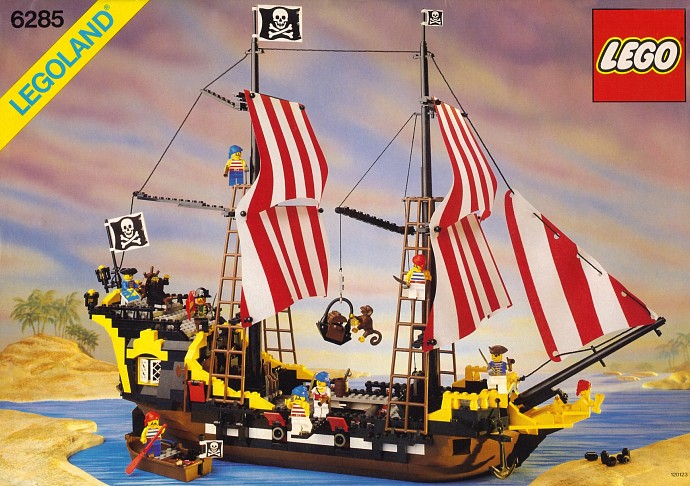

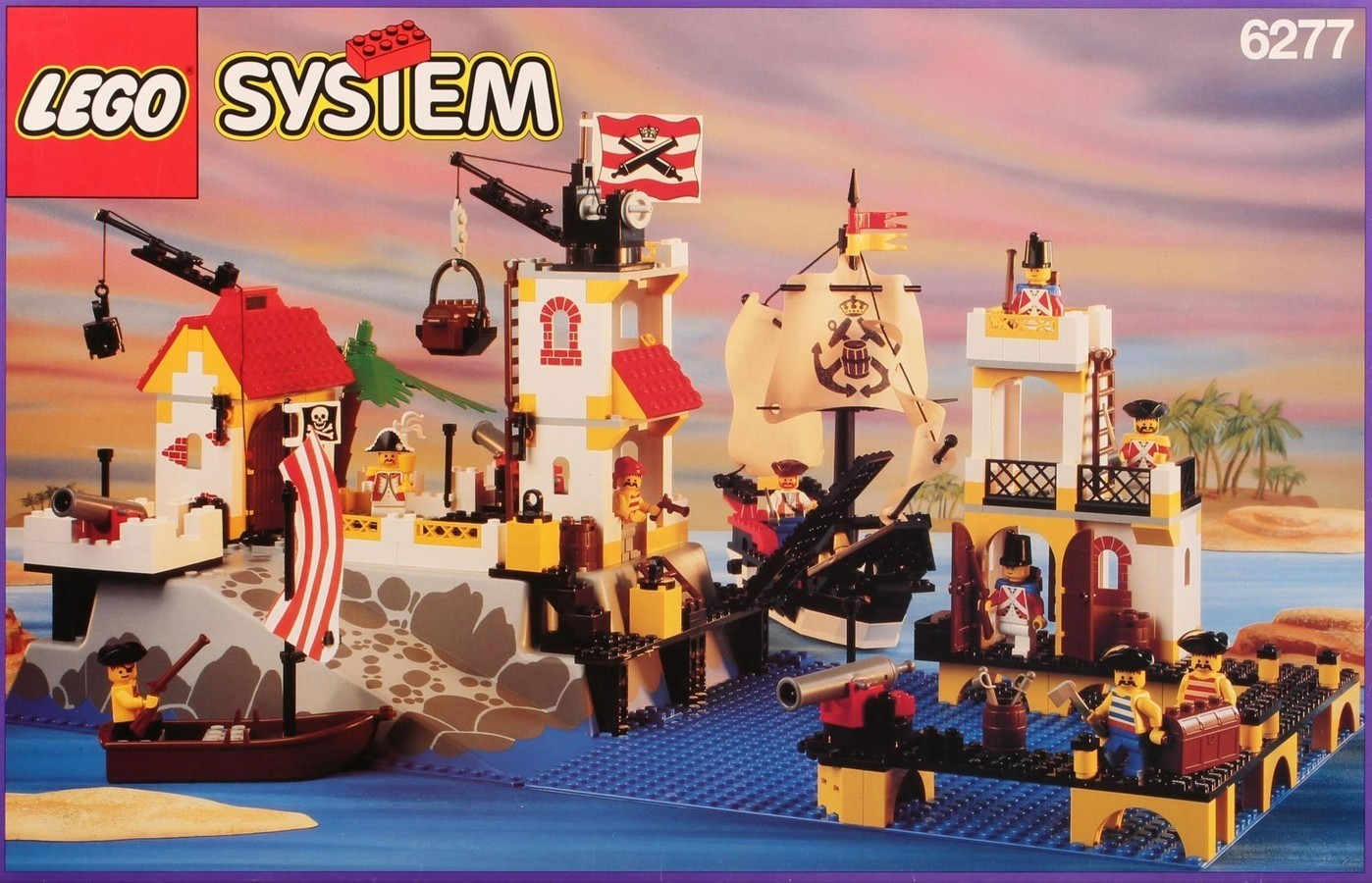
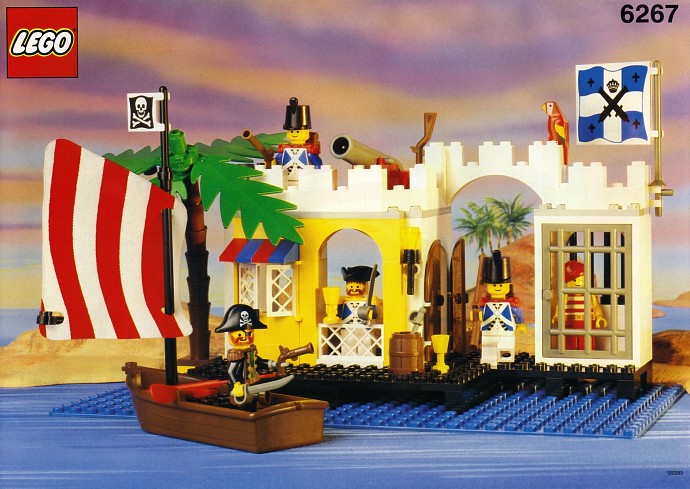
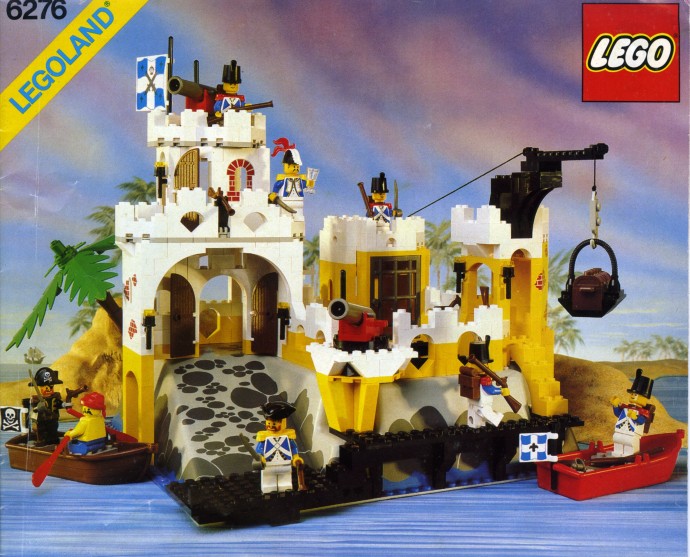


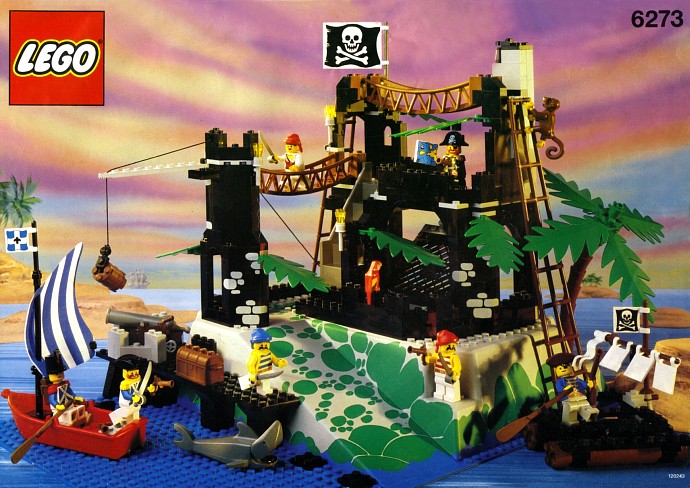
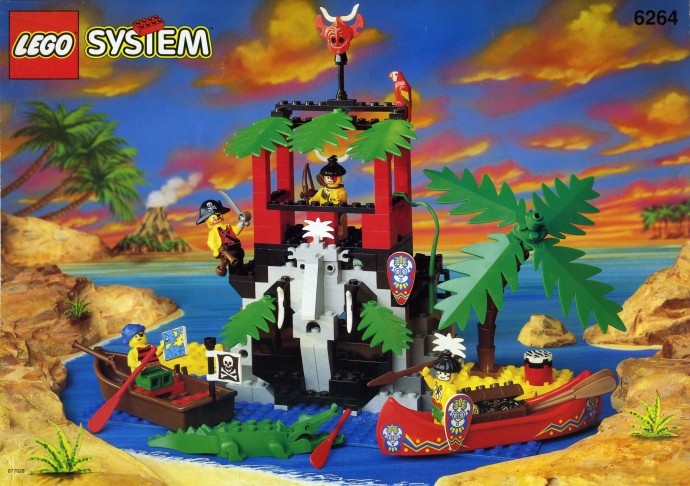








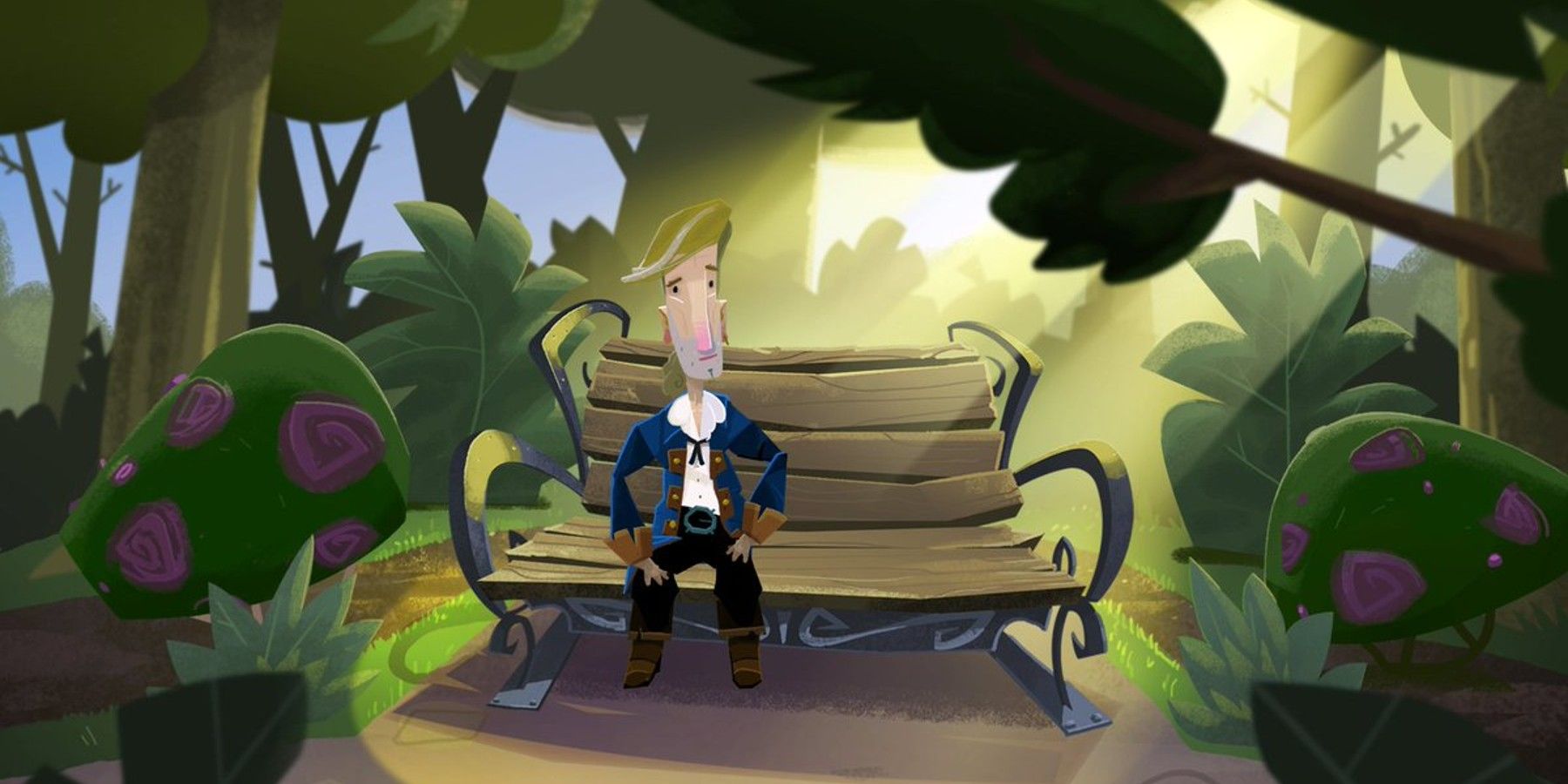
LEGO and Monkey Island - A Life Story
in General Discussion
Posted
I'll have to ask the museum than financed the bricks. If it's alright on their end, I will try produce some building instructions for the models, although, mind you, they still a relatively large piece count